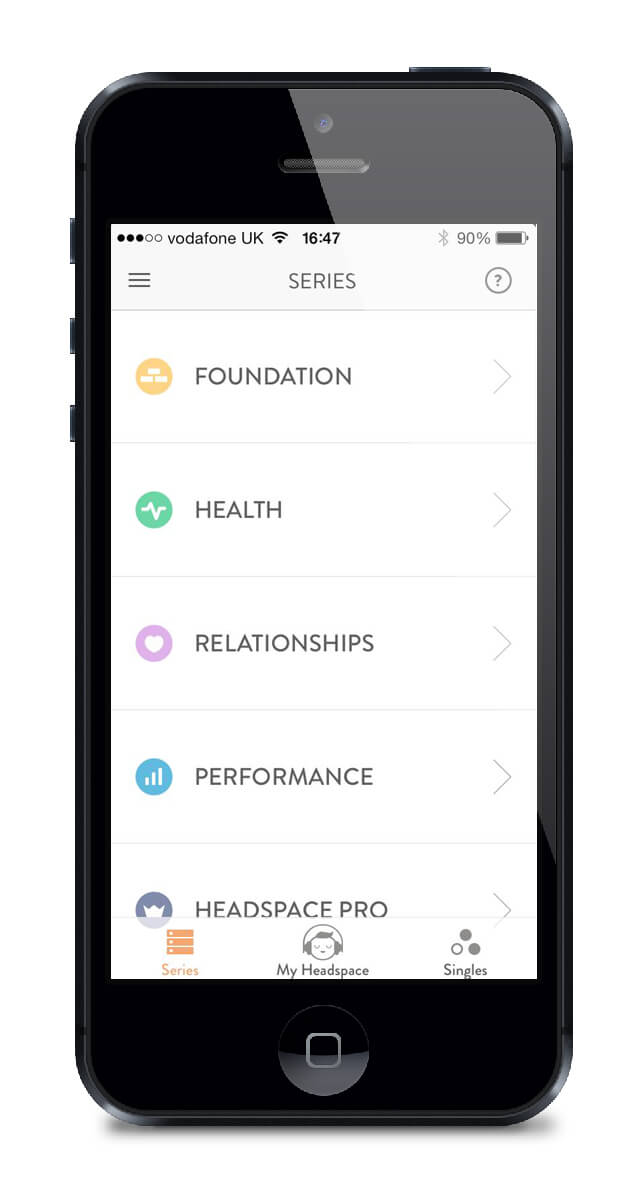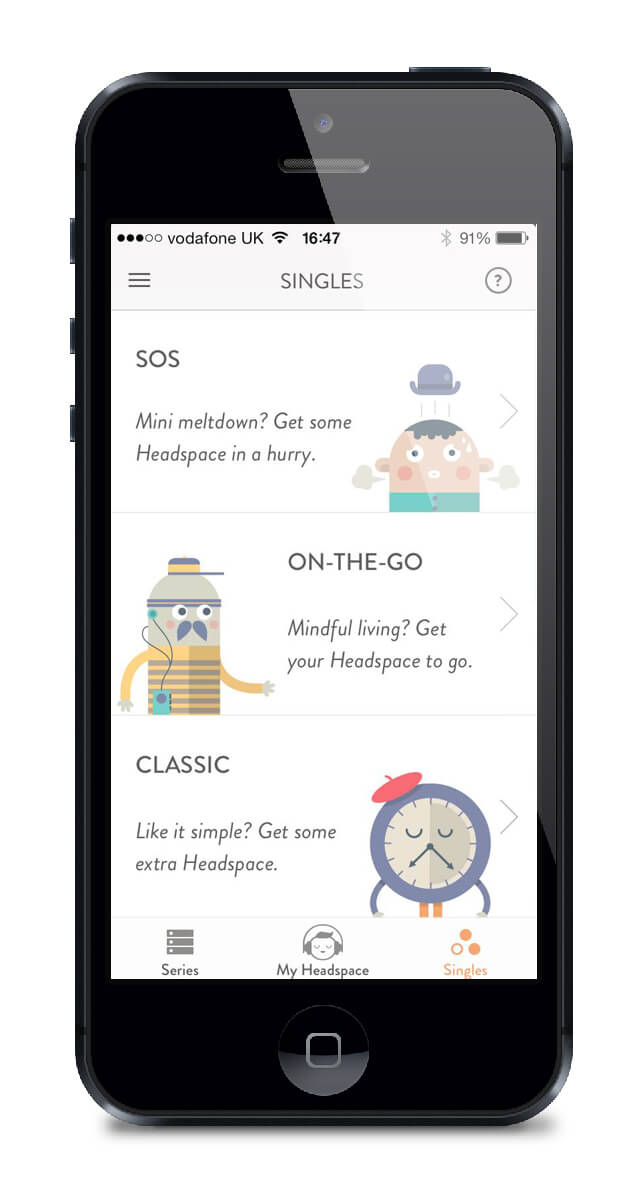About Time: We Get Some HeadspaceBy Merri Leston
While many Twenty-somethings see out the decade in a whirlwind of studying, inferiority complexes and ladder climbing, Andy Puddicombe left university to study meditation – ending his journey in a Tibetan monastery in the Himalayas. Following his ordination as a monk, Andy returned to the UK and co-founded Headspace in 2010 with the intention of ‘demystifying’ mindfulness and sharing it with the masses.
Headspace: The Background
In a world where busyness is a badge of honour and greater investment can be put into redecorating than in maintaining good mental health, life can be a bit overwhelming. Based on Buddhist principles, mindfulness cultivates the sense of presence, of being completely aware of our thoughts, sensations and feelings without judgment or rumination.
Being mindful isn’t about seeking higher consciousness or clearing the mind, but training awareness and acceptance of each moment. 1.3 million users have found some headspace thanks to Andy. As part of our series on mental health, we thought it was about time we asked him a bit more about meditation.
Who can benefit from Headspace?
Everyone! Meditation impacts all areas of life. It can help to reduce feelings of stress and anxiety, improve your sleep, enhance productivity at work, improve your physical performance in sports and even help to soften the edges in relationships as we become more patient, better listeners, and perhaps a little kinder too. The range of benefits is vast and varies from person to person, but at the very least, I don’t know anyone who wouldn’t like a little more calm and clarity in their life.
Aside from mindful living, what aspects of monastic life do you think is possible to apply to 21st century urban living?
The answer is in the question really. The entire monastic set up is designed specifically to promote a mindful way of life, no matter what we’re doing. In the monastery that might be meditating, but it could just as easily be sweeping the floor or cooking lunch. So we needn’t distinguish quite so much between modern day life and monastic life, the mind is the mind, no matter where we live or what we are doing.
In terms of specific living conditions or guidelines, I’m not sure there would be a huge appetite from a modern audience for sleeping on hard wooden beds or not eating after midday. That said, I think most people would relate to the idea of simplifying life, reducing the amount of things we own, the amount of distractions we’ve got going on, getting enough rest, and making enough time to connect with those around us in a kind, caring and meaningful way.
How can we stop engaging with anxiety and rumination?
Simply by training the mind. Headspace helps with that. There is nothing terribly complicated or mystical about this process; it simply requires time and patience. The tendency to engage with anxiety is nothing more than a conditioned pattern of behaviour. Meditation allows us to learn a new skill where we let go of that old pattern and find a new way of perceiving those thoughts and feelings.
So, rather than engaging with the thoughts and getting caught up with them, or fighting with them and trying to suppress them, instead we learn to see them clearly, to acknowledge them, to let them go and come back to whatever we were focusing on beforehand. The concept is simple, but it requires a little practice.
How can we be sure mindfulness isn’t as susceptible to the placebo effect as medication? Do we see improvement because we want to?
The placebo effect is underrated. If someone feels happier, healthier and experiences more harmonious relationships with those around them, then I don’t think it really matters whether it is placebo or not. That said, thanks to neuroscience and the advancement of FMRI technology, we can now see what’s happening inside the brain itself, before, during and after meditation. We can also measure the results over a defined period of time.
So, we can see that the activity of the different cortex changes, making us less reactive, more emotionally stable, more empathetic, experiencing greater feelings of happiness and wellbeing. We can also measure stress responses to see that levels of cortisol and adrenaline remain at a level that is healthy for the body. Many studies have even shown how meditation can change the shape of the brain, in a process known as neuroplasticity, where the behavioural changes lead to long-term structural changes. So, funnily enough, rather than seeing improvements because we want to them, we see improvements whether we like it or not.
Do you think it is possible assessing ‘progress’ in meditation could be unhelpful?
I think it can be counter productive if we spend too much time trying to evaluate our journey and assessing the progress we have made. But of course, it is only natural at first to look for progress, so we needn’t worry too much if we find it happening, as long as we are aware of it.
In many ways, the idea of progress is the antithesis of meditation. Progress is all about comparison, whereas meditation is about letting go of judgment. Progress is very conceptual and requires us to think about the past and the future, whereas meditation is about resting the mind in the here and now. But perhaps most relevant of all is the question ‘Who is questioning the progress?’ Is it not the same thinking mind that we have become exasperated with and exhausted from in the first place? So, much better to just let it all go and enjoy being present in the here and now, with an open mind, free from comparison or judgment and without the pressure of ‘progress’.
How can one neutralise and accept anxious thoughts?
By becoming friends with them! We will never understand that which we are always running away from. The only way we will ever find acceptance with these thoughts is to sit with them, to get to know them, to become friendly with them, to smile at them and maybe even one day to laugh along with them. This is real freedom, not to find some temporary solution where we can neutralise or prevent such thoughts from arising, but to be so comfortable with our thoughts and feelings that we really don’t mind either way.
Isn’t becoming aware of the frequency of anxious thoughts anxiety-provoking in itself?
It could be, if we were doing it in the wrong way. But if we have someone teaching us and we know how to bring the focus out of the thinking mind and into the physical sensation – effectively cutting the feedback loop of anxiety between the body and the mind – then there is no danger of this at all. It’s for this very reason that we’ve recorded guided meditations on the Headspace app, because it helps to prevent these kinds of mistakes from happening.
Thanks Andy. We feel better already. Find some headspace of your own: www.headspace.com







